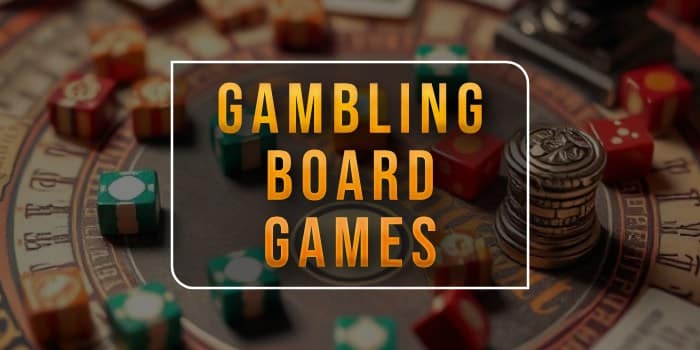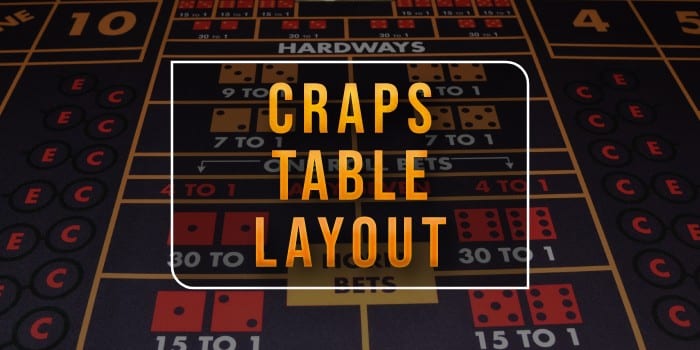- Casino
- By State
- Alabama
- Alaska
- Arizona
- Arkansas
- California
- Colorado
- Connecticut
- Delaware
- Georgia
- Florida
- Hawaii
- Idaho
- Illinois
- Indiana
- Iowa
- Kansas
- Kentucky
- Louisiana
- Maine
- Massachusetts
- Maryland
- Michigan
- Minnesota
- Mississippi
- Missouri
- Montana
- Nebraska
- Nevada
- New Hampshire
- New Jersey
- New Mexico
- New York
- North Carolina
- North Dakota
- Ohio
- Oklahoma
- Oregon
- Pennsylvania
- Rhode Island
- South Carolina
- South Dakota
- Tennessee
- Texas
- Utah
- Vermont
- Virginia
- Washington
- West Virginia
- Wisconsin
- Wyoming
- By State
- Slots
- Poker
- Sports
- Esports
- Home
- How to Read Sports Betting Odds
How to Read Sports Betting Odds

Ever wondered what the ‘+’ or ‘-‘ means in odds? For those of you looking to learn how to read betting odds, you will find the following guide to be a perfect and detailed breakdown of how odds work, what probability they carry, and how you stand to benefit from this new knowledge.
While many calculators exist out there that can crunch the numbers for you, familiarizing yourself with how lines work is essential to becoming a skilled sports bettor, and focusing on the bets that are worthwhile hold the key to a big win.
What Do Betting Odds Mean?
Betting odds achieve three essential things. They tell you which team or player is more likely to win, and they give you an idea of how many sportsbooks think a favorite would win and what you stand to win betting on one outcome or another.
Essentially, odds are there to help you make an informed decision but keep in mind that this is only the sportsbook’s opinion based on complex algorithms that calculate probabilities in the background.
Different Formats
There are three main formats that odds can be displayed in, including American, Decimal, and Fractional. These formats may appeal to you equally, or you may have a preferred format and stick to it.
That is fine, and you can use any of the three formats at all sportsbooks around the world, as they will always make sure to allow you to adjust the odds in whatever format feels most intuitive to bet in.
While bets do have implied probabilities, sportsbooks add something known as the vigorish or cut. The fee you pay on each bet is there to make sportsbooks a profitable business, so make sure to factor that amount in when calculating what your potential profit is.
American Odds Explained
American odds are expressed as three-digit numbers preceded by a plus (+) or minus (-), indicating whether you are betting on the favorite or underdog and how much you ought to bet to win $100.
What Does the + and – in American Odds Mean?
Before we can explain American odds, we need to understand what the (+) and (–) symbols stand for. It’s actually very simple to read through.
The (+) indicates who the underdog is. If you are betting on the Miami Heat to win (+102) against Milwaukee Bucks (-121), you are essentially backing the underdog in the game.
On the other hand, you have the Bucks who are posted at (-121). This means they are more likely to win. You must risk more to win back $100 i.e. $121.
This is essentially all you need to know about American odds on the face of it. But of course, not everyone is going to bet in the hundreds, and more bets will be much smaller.
To help you understand how you can calculate your winnings based on a bet amount, we will now cover the formula.
Calculating Potential Winnings with American Odds
Calculating your potential winnings with American odds is not difficult at all. The formula is actually very simple, and while a Bet Slip will usually convert the numbers for you automatically, it’s good to know what actually happens in the background.
Let’s consider the following example:
- Los Angeles Lakers (-300)
- Phoenix Suns (+250)
We will bet on both teams so that you are aware of how the formula works and how you can use it to calculate every potential payout yourself. Placing a $20 bet on the Los Angeles Lakers (-300) would look like this:
300/100 = 20/x
- Multiply to get 300x = 2000
- Carry over the 300 to get x= 2000/300
- x = $6.67
In other words, if you choose to back the Lakers on (-300) with a $20 bet, you will end up getting $20 + $6.67 or $26.67.
If you choose to place a $20 bet on the Phoenix Suns (+250), then your equation will change slightly, as follows:
100/250 = 20/x
- Multiply to get 100x = 5000
- Carry over the 100 to get x = 5000/100
- x = $50
In other words, your bet will result in a $50 win + $20 bet, which will together amount to a good $70 payout.
How to Calculate Implied Probability for American Odds?
Just like with calculating your potential winnings, there are two formulas for calculating implied probability.
The formulas must be used for positive and negative American odds, and they will allow you to see what the chance of a specific outcome happening is. Let’s use or Lakers vs. Suns example again.
- Los Angeles Lakers (-300)
- Phoenix Suns (+250)
Probability for Negative American Odds
Negative American odds / (negative American odds + 100) * 100 = implied probability
Based on this formula, what you need to do if betting on the Los Angeles Lakers is 300/ (300+100) *100 = 300/400*100 or 75.00%.
Probability for Positive American Odds
100 / (positive American odds + 100) * 100 = implied probability
If you are betting on the Phoenix Suns, then you adjust the numbers as follows: 100/ (250+100) *100 = 100/350 *100 = 28.57%.
Feeling a little lost? Don’t be. Make sure to follow the correct order of operations:
- Parentheses
- Exponents
- Multiplication
- Division
- Addition
- Subtraction
Understanding the implied probability can help you to identify valuable betting opportunities where sportsbooks may have underestimated a team giving you a good opening.
Decimal Odds Explained
American sports bettors are certainly some of the most capable bettors out there, as they deal with rather complex representations of probability and potential winnings.
Decimal odds are essentially the same, but they may appeal to you a little more if you are not used to the American odds representation. If we took the same example as before and switched to Decimal odds, the odds would look like this:
- Los Angeles Lakers +1.33
- Phoenix Suns +3.50
These odds require much simpler calculations, although if you have solid mathematical knowledge, you will notice that the information is exactly the same, notwithstanding the differences in representation.
Decimal odds tell you that for each $1 you bet on the Lakers, you stand to win a grand total of $1.33. However, this includes your own bet +$0.33 profit.
Similarly, the +3.50 odds tell you that for each bet you place on the Suns, you stand to win $1 + $2.50 profit.
How to Calculate Implied Probability for Decimal Odds?
To show you that the implied probability stays the same across the different representations of the odds, we will quickly run the numbers once again. The formula is much simpler here. You simply have to follow this:
100/decimal odds = implied probability
So, let’s put this to the test:
- 100/1.33 for the Los Angeles Lakers = 75.18%
- 100/3.50 for the Phoenix Suns = 28.57%
It’s very satisfying to see the same numbers represented differently work out in all cases, but if pushed, we must agree that Decimal odds are the quickest way to navigate your next bet.
Fractional Odds Explained
Fractional odds may look a little peculiar to you at first, but they are actually a much simpler representation of odds than their American counterparts. Here is a visual representation of fractional odds:
- Los Angeles Lakers 33/100
- Phoenix Suns 5/2
Essentially, the left number will tell you how much you stand to win if you wagered the right amount. When we put it this way, and in light of what you already know about the example selection, you can see how fractional odds make a lot of sense!
How to Calculate Implied Probability for Fractional Odds?
Once again, there is an easy formula to make sure that you can calculate the implied probability, and once again, using the same selection, the probability will pan out.
Here is how you can calculate the probability for any selection with fractional odds. First, let’s take a look at the selection:
- Phoenix Suns 5/2
The left number is called a “numerator,” and the right number is called a “denominator.” Based on this information, the probability formula will look like this:
denominator / (denominator + numerator) * 100 = implied probability
When you translate this for Phoenix Suns, what you get is 2/ (2+5) *100 = 28.57%, exactly as before.
Try doing the same with the Los Angeles Lakers 33/100 as follows = 100/ (100+33) *100 = 75.18%.
Beware of the Draw and Odds
Not every sport has a draw option, and definitely not when it comes to American sports. Having an NBA or NFL team finish with the exact score is an incredibly rare occurrence and will usually never be the case.
However, if a draw occurs, mostly on soccer, it will be called a “push,” and it will result in the sportsbook refunding your bet(s). You can calculate the potential winnings and implied probability on the push in the exact same way you would on any other selection.
FAQ
What do odds of -200 mean?
This means in order to win $100, you must bet correctly with $200. If you are betting on a team that has a smaller number, they are favored to win in the matchup.
What do odds of +200 mean?
This means if you bet correctly with $100, you will win $200. If you are betting on a team that has a higher number, they are the underdog in the matchup.
Related Topics:
After finishing her master's in publishing and writing, Melanie began her career as an online editor for a large gaming blog and has now transitioned over towards the iGaming industry. She helps to ensure that our news pieces are written to the highest standard possible under the guidance of senior management.
Must Read
Legal
November 17, 2019
Philippine Gaming Operators Involved in Prostitution Ring
Casino
October 7, 2019
Haven Gaming to Build Danville Casino in IL
Casino
October 6, 2019
MGM To Pay $735M as Part of Settlement for Las Vegas Shooting
Casino
September 28, 2019
Swiss Casinos Group Partners with Playtech
Sports
September 27, 2019
Mobile Sports Betting Finally Coming to Indiana
More Articles















December 3, 2024
Boxers Who Started Late and Became Champions

November 19, 2024
Best Gambling Board Games

October 25, 2024
Top 20 Books About Gambling

October 23, 2024
Craps Table Layout

Casino
October 21, 2024
Megabucks Slot Machines

September 30, 2024
What Soccer Positions Are There and How They Work

September 27, 2024
The Best Arcades in Las Vegas

September 26, 2024
When to Double Down in Blackjack

September 24, 2024
Best Offshore Sportsbooks and Betting Sites

September 22, 2024
League of Legends World Championship: Odds, Tips & Predictions

September 19, 2024
How to Become Professional Gambler

September 17, 2024
What Is a Pachinko Game Machine?

September 16, 2024
Michael Jordan Gambling: The Good, the Bad, and the Ugly

September 13, 2024
Best Odds in Vegas – Which Game Is Superior?



